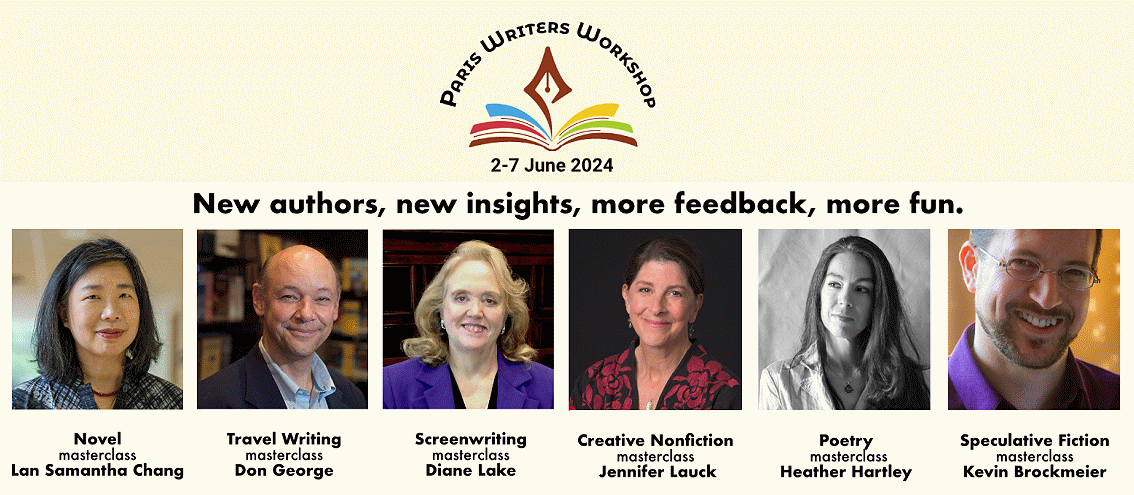
From Idea to Script to Sale





Before I get to today’s blog…
Thinking about doing more with your writing? Why not join me in Paris June 2-7 for my Masterclass in Screenwriting? Come be part of a dynamic community of writers and literary agents to learn, to write, to network, to energize your literary goals—and just to have fun in the City of Light!
The Paris Writers Workshop is the longest running literary program of its kind. This program offers 6 masterclasses by renowned authors, each a specialist in their field—and I’ll be teaching the Screenwriting Masterclass—in English, of course.
The workshop will be held at Columbia University’s beautiful Reid Hall campus in the heart of literary Paris—Montparnasse.
Registration is now open: https://wice-paris.org/paris-writers- workshop
We’ll have a great time getting your story ideas off the ground!!

Movies from the Heart—The Tramp
One of the most endearing genres of film is the love story, the romance. And for the next few weeks, that’s what I’d like to talk about. If you’re thinking of writing a love story—or a story that has a love/romance element—come with me and we’ll see what writing such a story is all about.
And remember, there is a romance element in everything from comedies to action films to horror films to dramatic films. It’s pervasive. Let’s see how that happened.
When we look back at the beginning of cinema—to the early kinescopes, for example—we see the subjects were simple. A train coming into a station, people walking along a street. These early kinescopes were short—a minute or so—and they didn’t really tell a story, per se, they just showed something from everyday life. In a way, the first films were documentaries, just documenting how things happened, how things were done.
But as projection methods came about that allowed for films to be screened for audiences, people quickly lost interest in seeing that train coming into a station. And the idea of adding a narrative—a story—to the film came about.
When we look at some of the early silent films, The Tramp, a 26-minute film by Charlie Chaplin comes to mind.
You can see the 26-minute film online here: https://www.dailymotion.com/video/x1unfiw
When people talk about this film, they generally talk about this little vagabond of a character and how nothing goes right for him. And that’s true of the character, of course.
Chaplin talked about making these early shorts and said that all he needed was a park, a policeman and a pretty girl. In other words, he’s got his main character of the vagabond, the park makes for a nice setting, he’s interested in the girl, but his status as a tramp is going to set the policeman up against him. His point was, he was making the same movie over and over again.
But the most telling thing Chaplin said about the film is this, talking about his main character of the tramp:
He wears an air of romantic hunger, forever seeking romance, but his feet won't let him.
So it’s NOT just about a silly character who falls all over his big feet. It’s about a man searching for love but who just isn’t perceived by the girls as a dating prospect. A girl might feel sorry for him and even befriend him, but on her part, there’s generally no romantic interest.
I think this is why the character is so enduring—Chaplin played him in film after film. It’s because, quite simply, the tramp is looking for romance, for love, but is always thwarted. And we feel for him, we feel for his loneliness, his desire. Why? Because we can all relate to it. Sometime in our lives, we wanted that romance, that love, but were thwarted. So we’ve genuinely felt what he’s feeling.
And that’s the first thing to remember if you’re writing a romantic film—we, the audience, need to feel like your main character needs love [although at times he/she won’t even realize that] and we want to see him/her find it [if it’s a regular drama/comedy, etc.] or to lose it [if it’s a tragedy].
How easy is that?
Not very, as a matter of fact. And over the next few weeks we’ll look at how various films have succeeded—or failed—in their attempts to put romance on the screen.
Next week, 1932’s Trouble in Paradise.
Copyright © Diane Lake
10Sep23